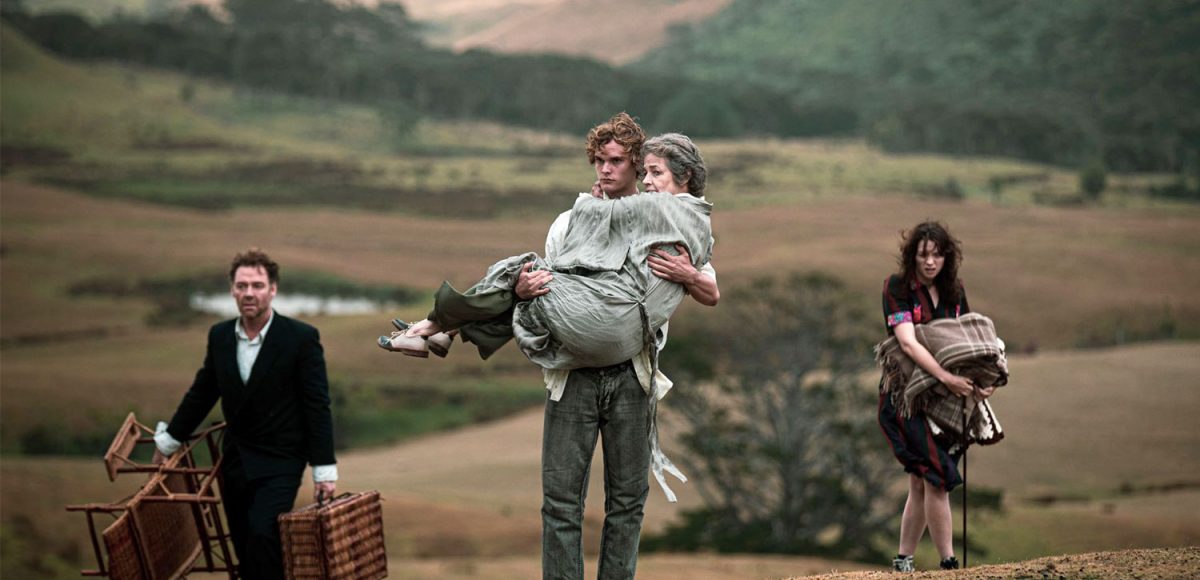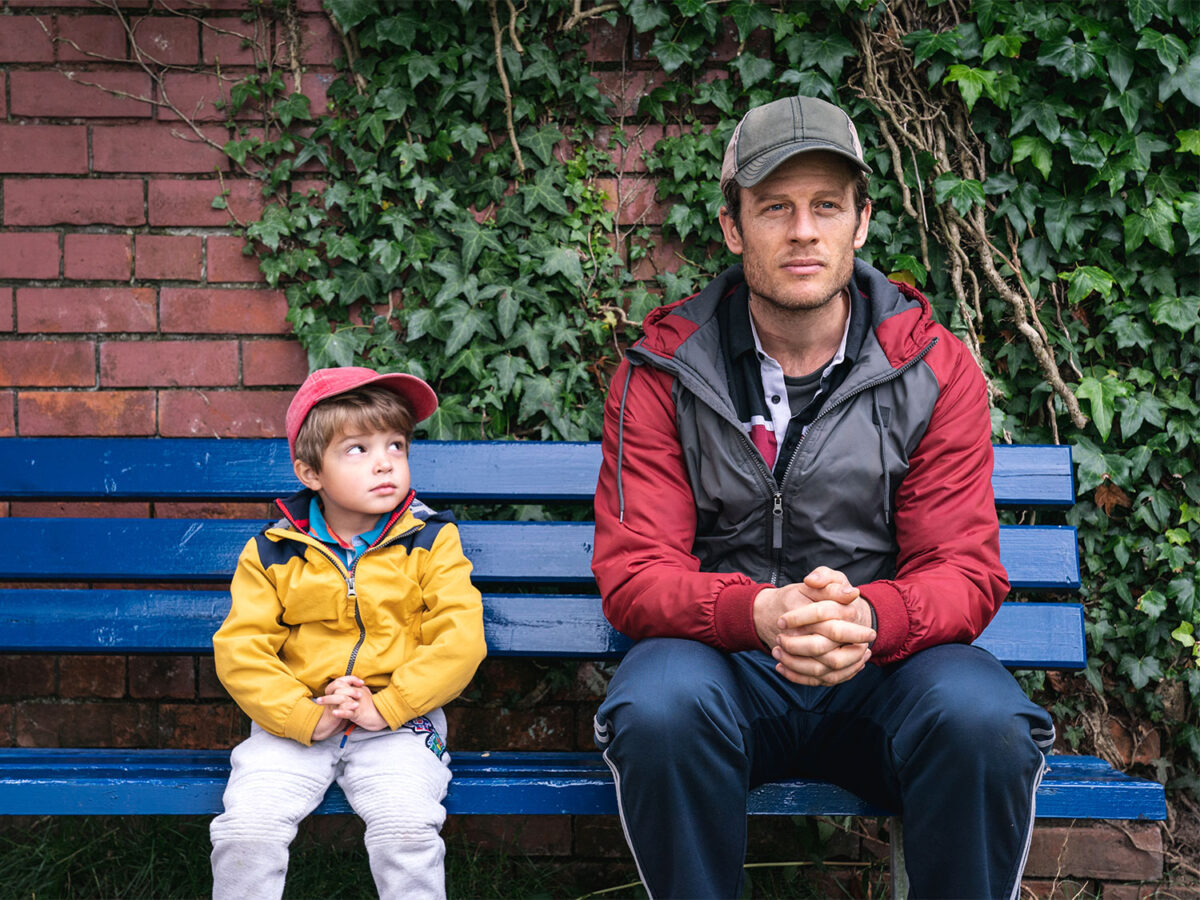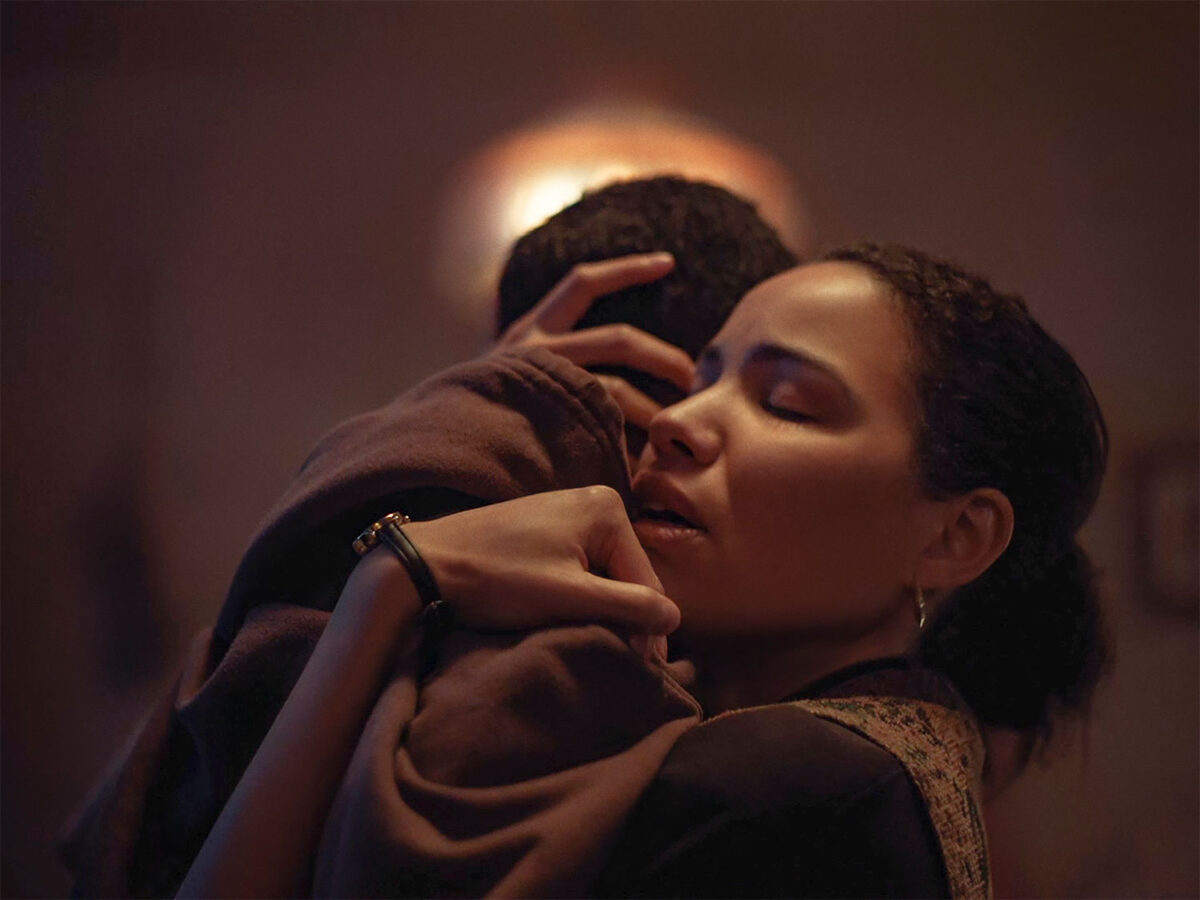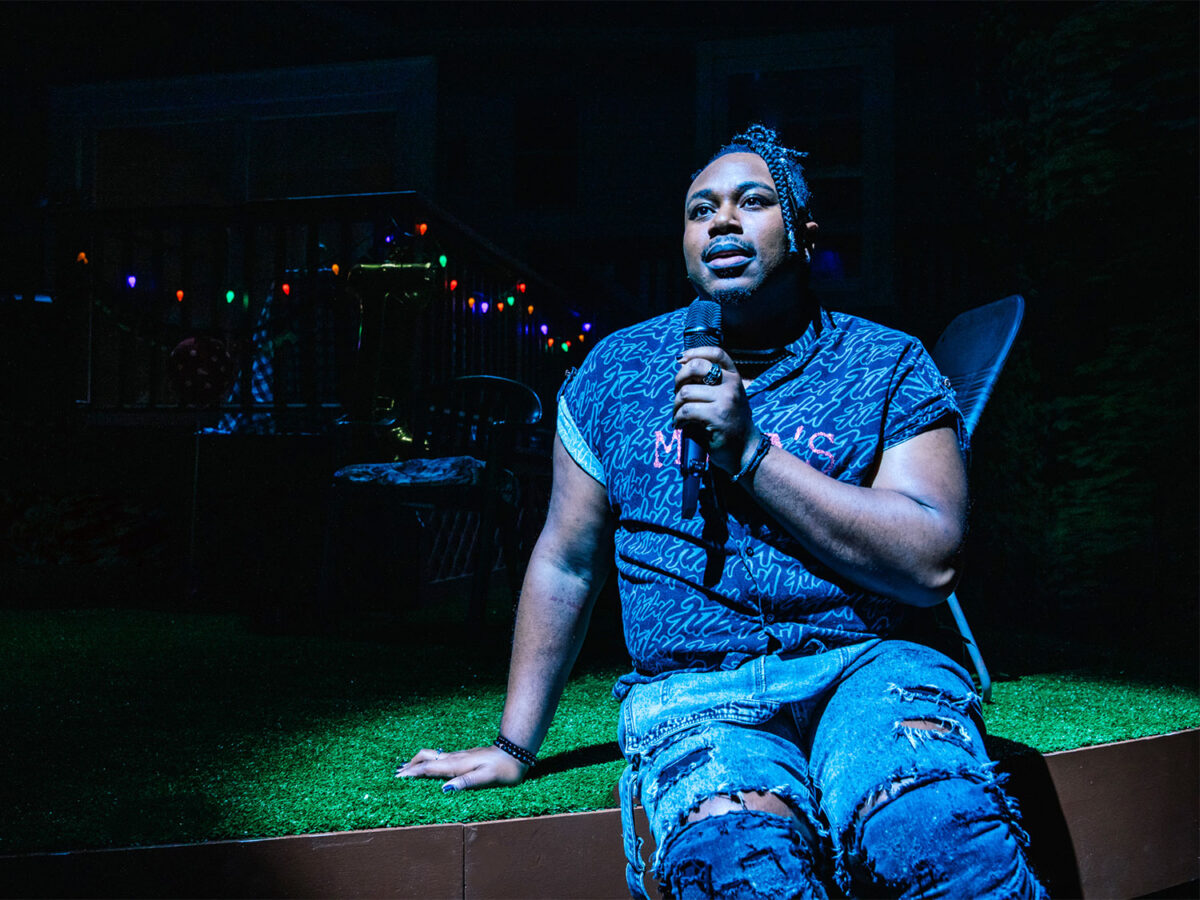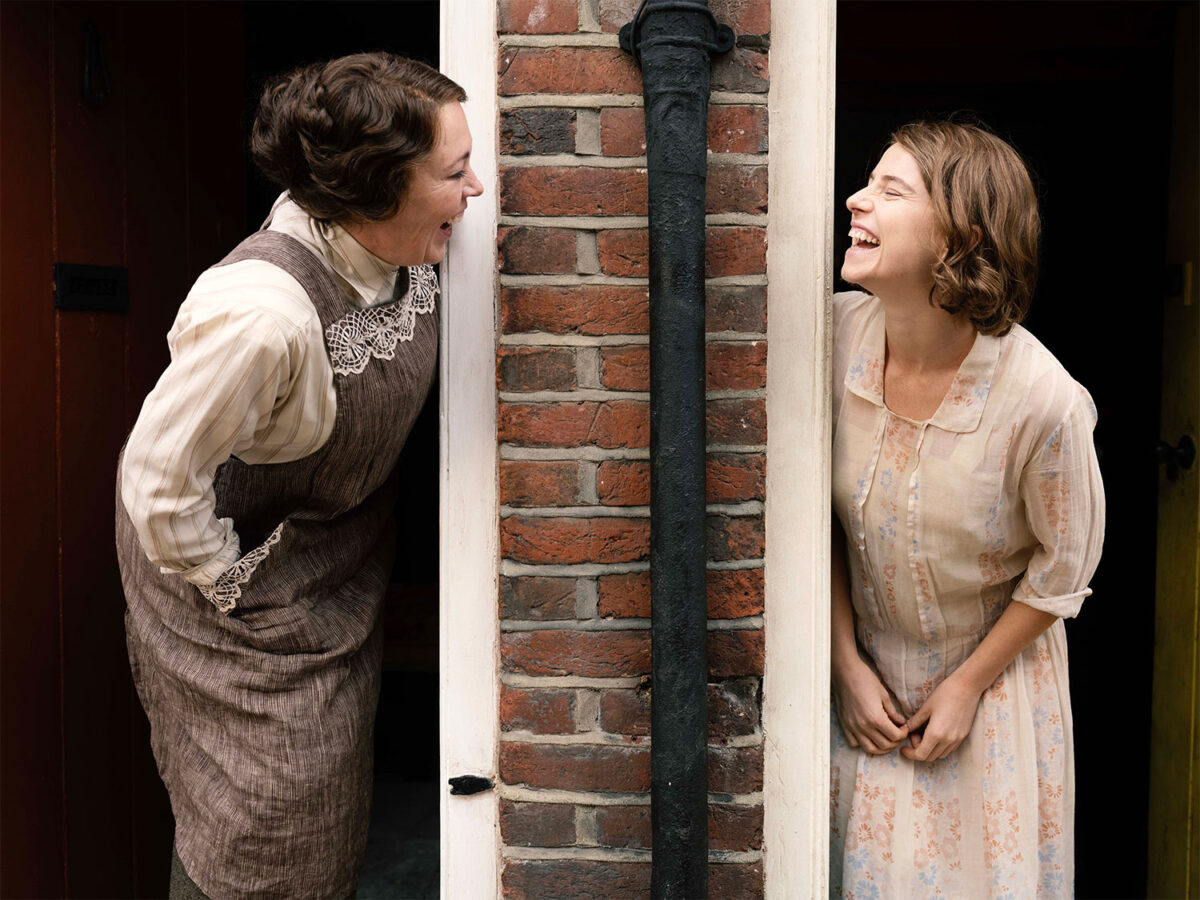Two seemingly different films open in theaters on Feb. 24. The first, called “Juniper,” is universal in its subject matter–family, healing, growing. Director/writer Matthew Saville approached this story through the eyes of a resentful teen. The growth and change, as imperceptible as it seems to be, is seismic in the end, giving it even more resonance as we watch everyone change. The second film, “Cinema Sabaya,” written and directed by Israeli filmmaker Orit Fouks Rotem, is about a group of women, Palestinian and Israeli, who come together at a local community center to learn about filmmaking. As they begin their personal storytelling journeys, we watch them become a family, dealing with similarities and differences in order to grow.
“Juniper” – Evergreen
Unexpectedly brought home from boarding school by his father, Sam is immediately suspicious. Actually, ever since his mother passed away, he’s suspicious of everything and everyone, but especially of his father. Boarding school and Sam were never a good fit, even less so because his father promised him he’d never have to go. It’s not just the normal acting out that every teen experiences–it’s gone several steps beyond that into self-destructive behavior. The surprise awaiting him is his English grandmother, who comes to stay until she recovers from a severely broken leg. To Sam, this is further proof of his father Robert’s hypocrisy. Beyond estranged, Robert hasn’t spoken to his mother in years and Sam only knows of her existence. Not only is she there, in their home, but he is expected to be the backup caregiver for a geriatric, wheelchair-bound alcoholic.
It’s not a spoiler to reveal that Sam, every bit as unpleasant as his grandmother Ruth, eventually bonds with her. It’s that blend of coming of age and understanding that’s been told so many times before. But there’s always room for one more if it’s told well, and this one is. No one becomes loveable, Ruth doesn’t stop drinking, and Sam still has suicidal thoughts. But within the parameters of their characters, each learns some modicum of acceptance and they begin to hear one another. Each suffers from regrets that have stunted their development but each will learn how to go forward even under the most difficult of circumstances.
The characters themselves are interesting, the father being the least so in this equation but he’s primarily there to push the narrative forward. Sam is smart, talented, uncommunicative and miserable. His defiance in refusing to care for or even talk to his grandmother is rooted in events we will only discover later. His grandmother, profane when she chooses to talk and resentful of her dependence on others for the first time in her life, was a renowned photojournalist who traveled the globe shooting wars and conflicts, of which there was no end. As a single mother, she put her son, Sam’s father, in boarding school, leaving him with a lifelong resentment about which he talked endlessly. Now here she is, drinking a pitcher full of gin and water (and not in equal portions), sitting alone in a room near this unknown grandson who hates her without taking the time to get to know her and then hate her. And in New Zealand no less. She’s still confused as to why her son left England in the first place. If it’s a competition to see who can be the most unpleasant, it’s a tie.
But Ruth’s been around the block, and even though she was never much of a mother, she has a few tricks up her rather amoral sleeve and knows what she can dangle in front of Sam that will melt some of that ice. That’s all she needs.
Director/writer Matthew Saville tells a somewhat autobiographical story based on his own experiences with his salty, seasoned grandmother. The script is a good one and the director keeps things moving emotionally. The cinematography is quite good. Certainly it doesn’t hurt that the topography of New Zealand is so varied and unusual, beautiful in its way but it also juxtaposes imposing with inviting. The indoor shots are equally interesting because of the lighting challenges, focusing many shots on Ruth in the dark, metaphoric, no doubt, for her life.
It was his choice of actors that makes this “coming of age/becoming a family” film excel. Márton Csókás is fine as Robert. Not much is demanded of his character but his Robert is the fulcrum on which both sides balance, albeit precariously. This is something of a breakthrough performance for George Ferrier as Sam. A relatively new talent, Ferrier was able to exude that toxic level of testosterone directed at himself and grow, gradually, into a more responsible and empathetic young adult. Too often one sees roles like this where in one take the teen is surly and in the next transformed. Saville was able to direct the talented Ferrier into a multi-dimensional portrait of lost and found with all the gradations in between. Ferrier was able to convince us that his anger was righteous before we discovered its true root.
The real coup was getting Charlotte Rampling to play the role of Ruth. Rampling was a major star from her first appearance on the screen and remains one today. She brings depth and believability to any role she plays and this is no exception. A good tale to begin with, her very presence makes this a much more interesting story with unspoken clarity and emotion. Ruth wears her life unapologetically on her face, a face that reveals every road taken, every choice made and the few regrets she’s ever had. Her voice has grown huskier and even sexier, if that’s possible, over the years and for Ruth she’s dipped it in whisky, or rather gin. Rampling leaves you wanting to know more, but she’s already used her mystery as a character point. Through slit eyes, raising that ever present tumbler to her lips, you see a world that she gleefully chewed up and regretfully spit out what was left. The first glimpse of her glower and the growl from her throat and you know this is not a grandma who bakes cookies. Obviously I’m a fan of her work; there’s no point in hiding it. Originally a model, she broke out as the sexy, narcissistic “bad girl” in “Georgy Girl” in 1966 and has worked steadily in film and television ever since. What distinguishes her from other actresses “of a certain age” is her “what you see is what you get” attitude. Like Jeanne Moreau, another of my favorites, she has chosen to age gracefully and naturally. Every line shows on her face, signifying not age but experience and world-weary wisdom. My admiration grows by leaps and bounds because you can count on one hand the number of actresses known for their beauty who have allowed time rather than surgery to have a go at them. Those lines, wrinkles if you must, are to be celebrated as a roadmap to life.
Opening Feb. 24 at the Laemmle Monica and Town Center 5.
“Cinema Sabaya” – Sisterhood
A disparate group of women, Arabs and Jews, come together at the local community center to take a film course led by a young Israeli filmmaker, Rona. The project is called Cinema Sabaya, and when asked what “Sabaya” means, the Muslim women laughingly reply, depending on the pronunciation, either “prisoners of war” or a group of women. It depends on the pronunciation. Rona takes the latter. When one of the Jewish women uses the term terrorist, their counterparts quickly interject, “We refer to them as freedom fighters.”
The initial tension between the women is palpable. The class will be held in Hebrew, a major irritation to the Arab women. The reason? The Arabs understand Hebrew, the Jews don’t understand Arabic. For one of the Jewish women, it’s her first time in a room with Arabs. Still, they make progress and support the projects of their fellow students.
As the exercises continue, a therapeutic benefit begins to surface. The films become more personal; the women become more open. The elder Muslim stateswoman of the group is a gentle presence until one of her beliefs is challenged. Several of the women are skeptical and anxious. But Rona isn’t there to challenge belief structures or politics. She’s there to guide them in telling their stories filmically by giving them cameras and teaching them the rudiments of how film works.
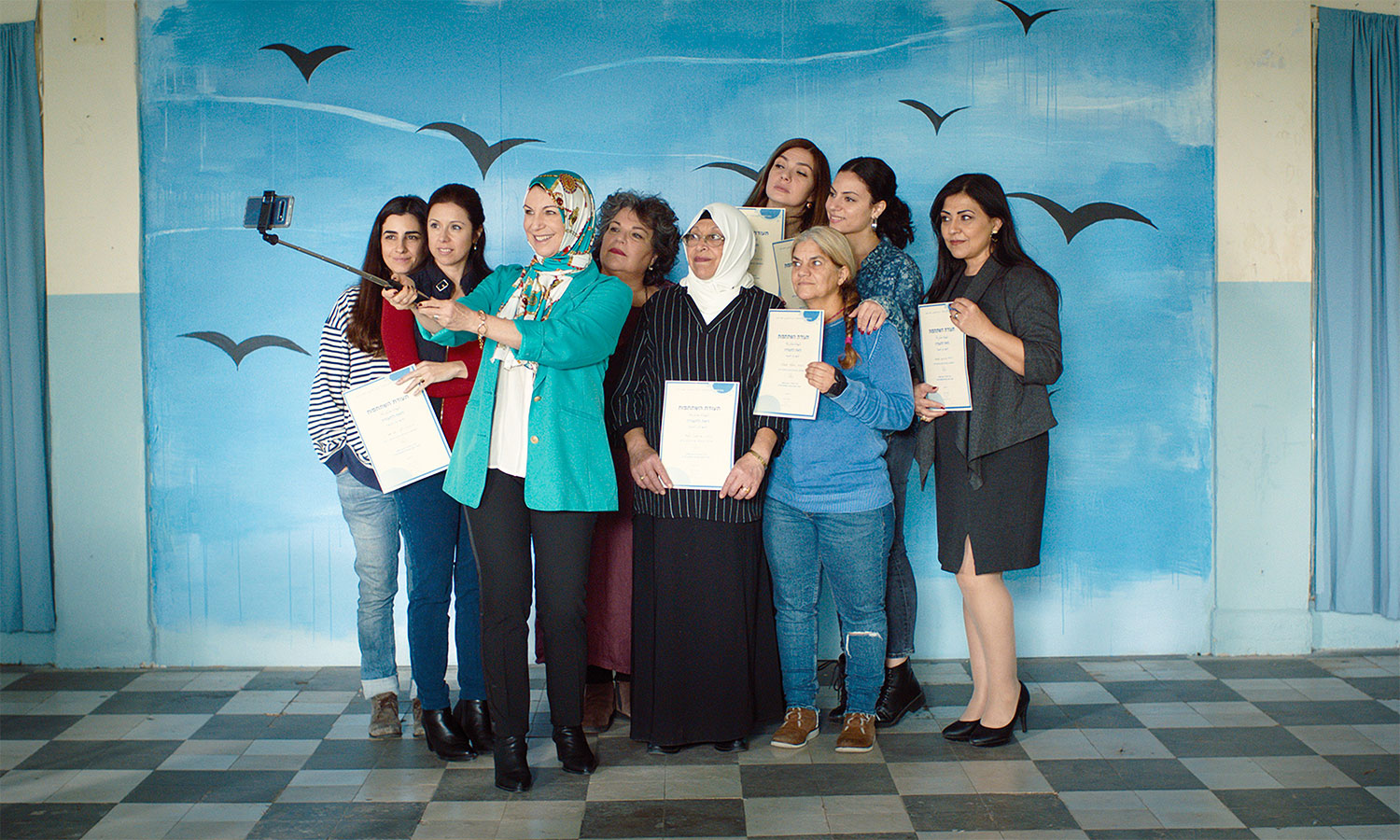
As each woman introduces herself to the others, she is encouraged to tell them what they dreamed of having or being. A couple of them wanted to be singers, one woman wants a driver’s license, another her own apartment. They are remarkably straightforward and each dream, while small in our eyes, is almost insurmountable in theirs.
Each lesson has homework. They must use the camera to document something in their day-to-day lives. One woman documents the isolation and depression of her husband as he avoids the camera, and more specifically, her, never alighting from the couch. Another’s exercise is auditory, used to prove to her husband that she doesn’t snore. She does. As they watch each other’s films, they get to know one another. Most have at least one problem, seemingly impossible, to overcome. Souad, devout mother of six is being smothered by her mother-in-law and a husband who sees no need for her to drive. Nasrin, recently divorced, has had to move into her mother’s small apartment with her child. An apartment of her own is a pipe dream as she navigates the lower edges of the workforce.
The class becomes a de facto therapy session, somewhere they can finally be heard by someone who is sympathetic to what they are going through. For Rona the observer, she sees the possibilities of using their stories for her own purposes, something that will be her undoing.
Written and directed by Orit Fouks Rotem, this film of almost casual storytelling and naturalistic performances feels like a documentary. When Rona talks about wanting to turn these sessions into a film, I actually thought, “Well that’s what she’s done.” Only pulling myself back from almost total immersion did I realize that this was both more and less than what I thought. The camera is voyeuristic in its approach to these women who gradually let down their guard until they feel a betrayal in Rona’s secret agenda.
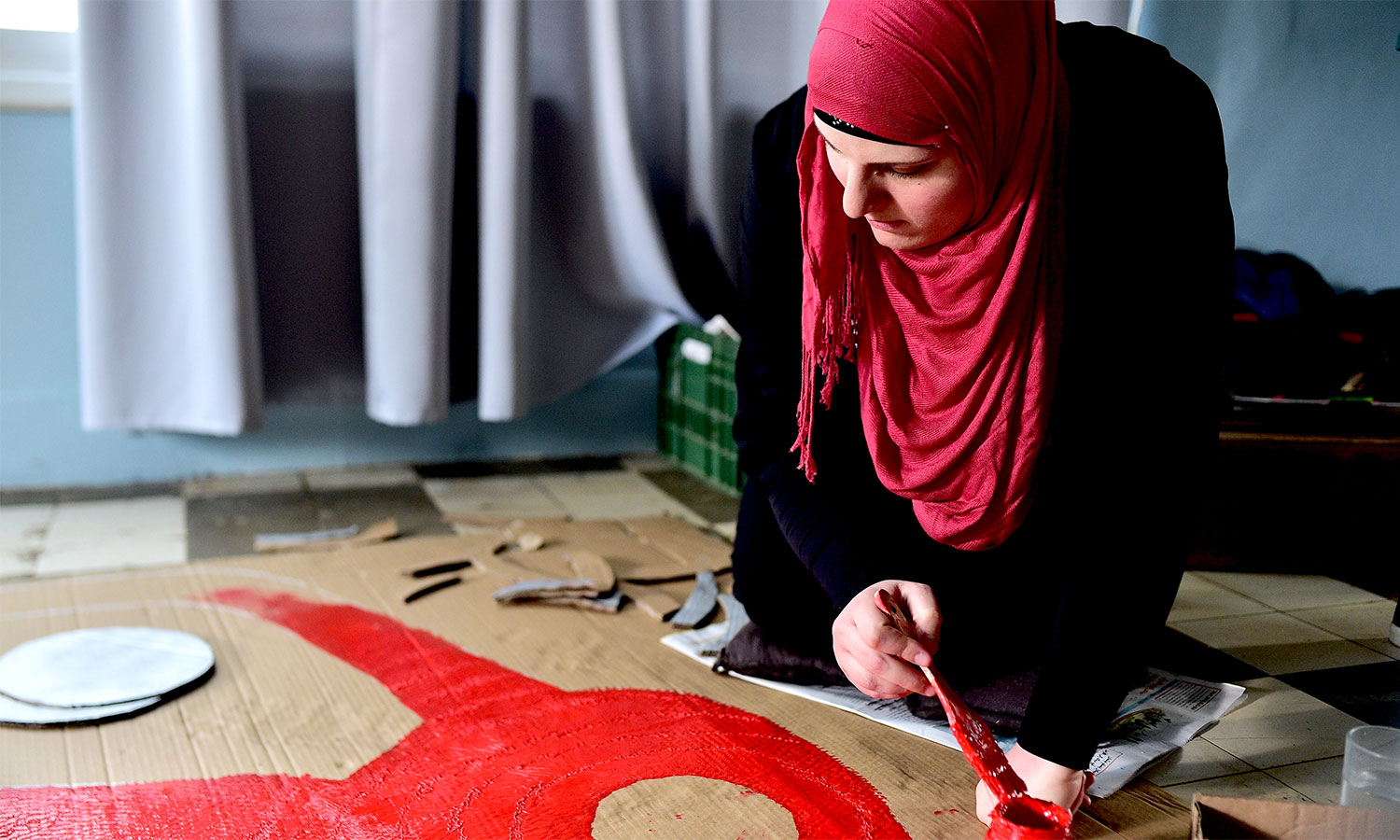
Rotem’s film is unique in its fictional realism. She has very slyly blurred the boundaries between the women’s national identities by only occasionally labeling the subtitles as coming from an Arabic speaker. The rest of the time it is up to the listener to try to discern the language differences. I have a good ear but could only occasionally distinguish the two languages. Her intent was always to show that there were more similarities between the women than differences. But in so doing, she also glossed over the important differences exerted on them by occupier and occupied.
The women are all good. Dana Ivgy as Rona is the most well known in Israeli cinema, but it is Joanna Said as Souad, the woman whose dream of a driver’s license is beyond reach, who gives the most depth and substance to the story. Her reticence and eventual blossoming is all the more heart wrenching when she feels manipulated and retreats. Her performance is all the more remarkable because this was her very first role, for which she was awarded Best Supporting Actress by the Israeli Film Academy.
Orthodoxy is illustrated by the Hijab worn by only two of the Muslim women; the other Arab women wore traditional Western dress. There were no Orthodox Jews in this group, so although diverse in some ways, it was a fairly homogeneous group. Would that this kind of idealism worked in the real world, but at least for the 90 minutes of this movie, it almost does. In the end, the women feel deceived and, to a certain extent, so did I. Nevertheless, it’s a worthwhile project that shines a light on never giving up on a dream and finding ways to make them attainable. Rotem may have manipulated the vision of everyday life but she has made an absorbing film that has you seeking answers to questions she didn’t ask.
In Arabic and Hebrew with English subtitles.
Opening Feb. 24 at the Laemmle Royal.



